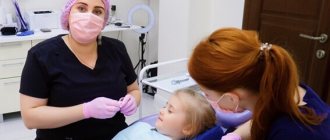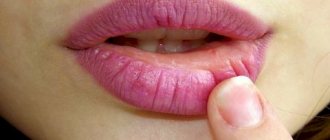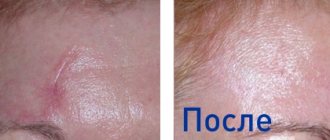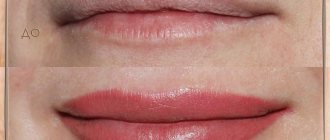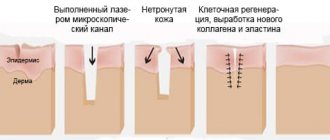According to antiplagiat.ru, the uniqueness of the text as of October 16, 2018 is 99.9%.
Key words, tags: gingivitis, periodontitis, caries, diastema, aesthetic defect, diagnosis, OPTG, periodontal diseases, gum recession, implantation, pulpitis, periodontitis, periostitis, oral examination
In the oral cavity there are inconspicuous, but very important elements of the dental system - the frenulum of the lips and tongue. In a state of normality, that is, anatomical health, they are virtually imperceptible. But if their location or shape is anatomically incorrect, processes such as eating and speech communication can turn into a constant source of discomfort and complexes. Surgical intervention - frenuloplasty - helps to effectively, once and for all, eliminate the existing anatomical defect and the consequences caused by it.
Anatomy of the oral frenulum
There are three frenulums in the human oral cavity: the tongue, the upper lip, and the lower lip. These membranous folds-ligaments, formed from epithelial cells of the mucous membrane and not containing large blood vessels and nerve endings, are additional means of attaching the tongue and lips to the oral cavity and cords - “lifting mechanisms”.
In addition, they are involved in ensuring the correct nutrition process, especially in infancy, in the formation of a correct bite, play a role in the correct functioning of the oral mucosa, facial muscles, speech apparatus, or, as it is also called, the sublingual or lingual ligament - this is a thin a membranous fold of the mucous membrane that runs along the midline of the tongue and, in the anatomical norm, connects it in the middle of the lower part with the floor of the mouth, in the area of the gingival base of the central lower teeth. In fact, the frenulum fixes, that is, holds the tongue, thereby somewhat limiting its mobility, without interfering with its movements and protecting it from retraction. In children aged 5 years, the normal frenulum length is at least 8 mm; at 12-13 years old, when baby teeth are completely replaced by permanent teeth, it is at least 21 mm; in an adult with a mature bite, it is 27-30 mm.
The frenulum of the lower lip (lat. frenulum labii inferioris) is a vertical fold-cord connecting the middle of the lower lip with the gum, and the frenulum of the upper lip (lat. frenulum labii superioris) is the middle of the upper lip with the gum. In the anatomical norm, the lip frenulum is woven into the center of the gums 5-8 millimeters from the neck of the teeth and is virtually imperceptible.
Types of scars
The scar remains in the area of the skin where it was most damaged. Experts divide scars into several types:
- normotrophic scars (they are not corrected, because they are barely noticeable);
- atrophic;
- hypertrophic;
- keloids.
Usually people develop atrophic variants of scars. These are depressions with chipped or rounded edges. They occur when there is not enough collagen in the body. Hypertrophic scars are more dense; they rise above the skin because the collagen has not had time to dissolve. But keloid scars are considered the most difficult. Here the connective tissue grows strongly, it covers even those areas of the skin that have not been damaged. These scars are reddish in color and quite rough.
Anatomical defects of the lingual frenulum
The most common anatomical anomaly of the frenulum of the tongue is its incorrect location - attachment to the lower part of the tongue is not in the middle, but much closer to its tip. Even with a normal anatomical length, the frenulum in this case is considered pathologically short. Often this defect does not cause noticeable inconvenience, unlike ankyloglossia - perhaps the most serious defect of the frenulum of the tongue. It is characterized by a combination of three anatomical pathologies: the area of attachment of the frenulum is shifted from the middle of the tongue to its tip, the length of the frenulum is significantly less than normal, the elasticity and mobility of the tongue are noticeably reduced. The negative impact of ankyloglossia on the dental system is very significant. Thus, babies suffering from it cannot properly latch onto their mother’s breast, and therefore are not sufficiently saturated 2.
In older children, ankyloglossia “inhibits” the development of the lower jaw, causing tooth displacement. In general, this pathology causes malocclusions, difficulties with breathing and swallowing, contributes to the appearance and development of speech defects, and makes it difficult to eat comfortably.
Ankyloglossia has three main varieties, which differ in the presence of certain anatomical features:
- the frenulum is thin, translucent, attached close to the tip of the tongue, hindering its movements. When the tongue rises upward, its tip acquires a characteristic heart-shaped shape;
- the frenulum is short and thick, “powerful”, restricts the movements of the tongue. When the tongue sticks out forward, its back takes on a hilly appearance, and the tip is lowered down;
- the frenulum is greatly shortened, has a whitish color, the fibers of the frenulum are fused with the muscle fibers of the tongue. This pathology is often combined with clefts of the upper lip or palate, the so-called “cleft palate”, “cleft lip”.
Scar removal
If healing proceeded without complications, the injury was shallow, then a normotrophic trace will remain that does not require correction. Keloid and hypertrophic scars do not disappear on their own; they are difficult to remove, even when using professional methods. Treatment helps smooth out atrophic formations.
We recommend reading:
- Symptoms and causes of scars on the lung
- How to Avoid Piercing Scars
- Rules for healing scars on the hands
Pharmacy ointments
It is recommended to get rid of scars with medications based on natural ingredients.
- Clearvin. The drug contains active natural substances that can smooth out and reduce the brightness of scar tissue.
- Dermatix. Smoothes damaged skin, moisturizes. Due to softening, itching, pain and other unpleasant sensations disappear. When using the gel twice a day, noticeable scars become whitish marks.
- Zeraderm Ultra. The ointment helps to quickly get rid of dense and old formations. The composition contains potent absorbable components that can stop the growth and remove hypertrophic and keloid scars.
- Contractubex. Anti-inflammatory ointment based on allantoin, plant extracts and heparin. Inhibits tissue growth, smoothes scars, and heals. Therapy is carried out over a course of 3-6 months.
- Kelofibrase. Healing cream with heparin and urea. Its action is aimed at moisturizing and softening tight skin, evens out the relief.
Review of effective drugs for resolving scars and scars
Correction of scar formation requires the right approach; an effective medication can only be prescribed by a doctor after studying the nature of the damage.
Folk remedies
The home treatment option is only applicable if the injury or surgery was recent. Natural components stimulate regenerative processes only in newly formed connective tissue.
No. 1 Grind the parsley herb, squeeze out the juice and apply to the problem area. This folk recipe is used to whiten and smooth small scars - herpetic scars, after tattooing or piercing.
No. 2 Cocoa butter . The composition is applied to the scar in a thick layer and rubbed in with gentle movements. With daily use, the damage around the mouth becomes less noticeable.
No. 3 Eucalyptus oil . The oil extract is used as a compress at night. Helps remove atrophic marks by moisturizing, softening and restoring blood circulation.
No. 4 Cinnamon with honey . Combine the components in equal proportions and apply to the injury for 15 minutes. This is a local activator that helps smooth out scars and lighten them.
A scar from herpes on the lip or minor damage can be corrected using home methods, if you comply with the main condition - perform the procedures regularly.
Surgical and cosmetic methods
A cosmetologist will quickly help you remove scars on your lips. Various methods can help restore your face and eliminate cosmetic defects, among which the following are the most effective:
- Laser. An effective cosmetic treatment method. The laser beam evaporates the upper layers of the epidermis on the damaged area, and the lower layer acquires a natural color and is evened out. To eliminate old scars, you need to undergo a course of procedures - 6-8 sessions. Sanding helps remove the bulge and replace it with smooth skin.
- Photo correction. The technique seals the growing connective tissue, seals the vessels, which stops the formation of a dense layer even at the stage of its formation. Used in the first six months after injury.
- Hyaluronic acid. Injections are used when it is necessary to smooth out a scar on the lip that extends inward. Once in the tissue, the acid stimulates the growth of collagen fibers and lifts the scar.
- Fractional laser. Small rays cause damage that stimulates the formation of new elastin and collagen. As a result, it is possible to smooth out the protruding areas.
Review of effective methods for getting rid of scars on the face and body in children
Removing scars using cosmetic methods is expensive, but effective. After several procedures, the skin looks smooth and renewed, the lips look beautiful.
Anatomical defects of the frenulum of the upper and lower lips
The most common is its attachment at the very neck of the teeth. This creates inconvenience when eating, and also significantly complicates oral hygiene, thereby promoting the formation of bacterial plaque, the occurrence of tartar and dental diseases provoked by it - gingivitis, periodontitis, caries.
In addition, an “ingrained” frenulum negatively affects bite and diction. In cases where, after the eruption of the upper front teeth, the frenulum “grows” between them, a diastema is formed - a gap between the crown parts of the teeth in the cervical area. A wide diastema is a significant aesthetic drawback. In addition, a short frenulum of the upper or lower lip in many cases interferes with quality orthodontic treatment and also causes excessive tension, thereby causing increased stress on the dentition. This, in turn, can cause the appearance of various periodontal diseases.
Types of formations
When it is necessary to remove a scar on the lip, you must first determine what type it is. There are several of them:
To read: Important rules for caring for dry skin that you should know
| Types of scars | Description | Photo |
| Normotrophic | It is a mark that differs from other fabrics only in color. These are the easiest scars to simply disguise and practically do not require serious removal measures. A normotrophic scar may differ from normal tissue in sensitivity | |
| Atrophic | It looks like a depression on the skin of the lips, as it is formed when there is a deficiency of collagen in this area | |
| Hypertrophic | This formation protrudes against the background of the rest of the surface of the lip. Sometimes it can be very noticeable. In addition, a hypertrophic scar has a bright color. The cause of this type is infection of the lesion on the lip. | |
| Keloid | The difference that makes this type the most problematic to eliminate is its ability to grow tissue. Reduced immunity affects the formation of keloid scars |
Methods for correcting frenulums
To eliminate anatomical anomalies of the frenulum of the oral cavity, surgical methods are used, among which the main ones are frenotomy, frenectomy and frenuloplasty. These are plastic surgeries, the purpose of which is to bring the frenulum to the anatomical norm.
The surgical method is always selected individually based on diagnostics that determine the characteristics of the defect, as well as taking into account the scale of its impact on the dentofacial system and speech apparatus, the patient’s age, and the general clinical picture.
frenulotomy
is most often performed - dissection of the frenulum in its middle part with special surgical scissors, after which its edges are sutured.
If the frenulum is excessively thick, as well as in cases where this is combined with curettage in the area of the existing diastema, excision, or removal of a section of the frenulum, is performed, sometimes together with the gingival papilla. The operation eliminates existing tension and stabilizes the dentition.
In some cases, frenuloplasty is used to lengthen the frenulum - an operation during which the site of its attachment moves away from the gingival margin or above it. Most often, for this purpose, plastic surgery is performed by counter exchange of triangular soft tissue flaps (according to A.A. Limberg) 3.
In addition to these methods, laser frenulum correction - an operation performed not with a scalpel, but with a laser, which ensures rapid surgical intervention, no bleeding and no need for sutures, low pain response and a short rehabilitation period (less than 7 days).
After frenuloplasty, the rehabilitation period takes no more than a week. At this time, the doctor, as a rule, recommends avoiding hard and hot foods; in addition, in many cases, consultations with a speech therapist, gentle facial massage and myogymnastic exercises are prescribed. In cases where the pathology of the frenulum has affected the change in bite, orthodontic treatment is necessary after surgery.
Features and types of scars on the lip
Scars on the face are an aesthetic and medical problem. In some cases, the patient requires the help of plastic surgeons to restore proportions and functions. It is easy to damage your lips; the skin in this area is thin and sensitive.
The main causes of lip damage:
- Applying sutures to the incision. After a fall, blow, or surgical removal of tumors, the lip may become severely torn and require suturing. The edges are tightened with special surgical threads.
- Herpes (cold on the lips). Herpesvirus infection has been diagnosed in 90% of the world's inhabitants. Against the background of reduced immunity, the virus is activated and worsened, which manifests itself in the form of rashes around the mouth. The duration of the acute period is 1-1.5 weeks. If a bacterial infection enters the wound, healing will take longer and a scar will subsequently form.
- Piercing. A puncture in the lip area does not always heal quickly and correctly. Many piercing fans experience rejection and an unsightly white mark or bump remains in the place of the hole.
- Animal bite. Pets playing too much can accidentally injure their owner and cut the skin. The damage may not be deep, but bacteria in saliva often leads to complications.
- Mechanical impact. Hitting your face on an uneven surface, the angle leaves small scratches. Often a small child hits toys and furniture, trying to quickly understand the world around him.
- Tattoo. Modern cosmetology allows women to look flawless in any situation. Thanks to the introduction of permanent into the layers of the skin, the lips look painted. Failure to comply with the technology and deep penetration of the needle often leave small scars.
In order for scar removal to be successful, you need to know what type it is:
- Atrophic. It looks like a depression formed as a result of the absence of collagen fibers.
- Kellyone. A growth on the surface, convex. Capable of growing.
- Hypertrophic. Protrudes above surrounding tissues. The color of the scar is bright. The cause of formation may be infection of the wound.
- Normotrophic. It is on the same level as the rest of the skin, differing only in color.
Scars on the lips take a long time to heal if the depth of the damage is large and the defenses of the immune system are reduced. If a suture was placed, it will take about a year for final formation. Minor injuries recover quickly.
Possible complications
As a rule, after plastic surgery to correct the frenulum, there are no complications due to the low traumatic nature of the surgical intervention. Normally, the patient may experience minor pain and discomfort after the anesthesia expires, and may experience some discomfort associated with the “acclimation” of the oral cavity to the changed conditions. It is extremely rare that scar deformation may form at the site of sutures, and then repeated surgical intervention is required. This complication is less likely to occur if you consult a qualified, experienced doctor for frenulum correction.
Features of scarring on the face
When planning to make a scar on your face, you need to carefully consider the size of the scar. The most popular places for scarring on the face are the eyebrows and cheek. You should not choose burning, as over time, the scar from burning on the face may lose its outline and look like a pigment spot. It is better to choose a cut at a right angle, so the scar will look more aesthetically pleasing. In addition, if necessary, it can be made less noticeable using cosmetics.
Interesting! Eyebrow scarification is often combined with tattooing and piercing. As a result, you can get a composition richer in composition and color.
Scarring at home
Scarification is a far from safe way to decorate your body, therefore, doing it at home is not recommended, especially for yourself. But, if the decision is finally made, then you can use a scalpel, a blade, and for a burning effect, a soldering iron. All instruments and the area where the scar is applied must be thoroughly treated with antiseptic agents. To avoid painful shock, be sure to use local anesthesia. You can use ointment or spray for local anesthesia.
Having decided to make a scar at home, you need to be prepared for the following possible consequences:
- in the absence of sufficient hygiene, the wound can fester and in the worst case
- case will lead to blood poisoning;
- the hand of a creative non-professional may tremble, resulting in a contour that only vaguely resembles the desired one;
- in the absence of special knowledge in anatomy, along with a scar you can get a disability.
Indications
Indications for correction of the frenulum of the tongue or lip (upper or lower) may include the following factors: dysfunction of sucking in infants; the patient experiences pain when trying to touch the palate with his tongue; tongue movements are limited; during eating and verbal communication, the processes of breathing and swallowing are difficult, and “fatigue” of the mouth occurs; There is incorrect pronunciation of hissing consonants, sounds “r” and “l”; malocclusion; violations of the aesthetic proportions of the face, tilt of the upper or lower incisors inward or outward; significant diastema; gum recession; discomfort while wearing orthopedic structures; preparation for implantation.
When is there hope that the scar will resolve on its own?
Sometimes you don't have to worry about how to remove a scar on your lip. If the damage was minor, and healing went without problems, then the trace of it will be barely noticeable. And over time, such a normotrophic scar practically disappears. It becomes thinner, ceases to remind itself of painful sensations, its color approaches the rest of the tissues and is on the same level with them.
If we are talking about hypertrophic and keloid scars, you should not expect that they will disappear on their own. And even methods of professional influence on them are not always effective enough.
Contraindications
Plastic surgery to correct the frenulum is not performed in the presence of blood clotting pathologies, serious mental disorders, during radiation or chemotherapy in the treatment of cancer, during exacerbation of chronic diseases, or in the acute phase of infectious diseases. In the presence of inflammatory processes in the oral mucosa, such as gingivitis, periodontitis, as well as caries, pulpitis, periodontitis, periostitis, the operation is postponed until the disease is eliminated.
Contraindications for removal
If a child has cut his lip and a visible scar remains at the wound site, parents are looking for effective ways to resolve it. It is better to treat fresh injuries with local medications that help soften and eliminate the inflammatory process in the tissues. A contraindication to their use is intolerance and an allergic reaction to the components.
Surgical and cosmetic techniques are used as prescribed by a doctor in cases of severe damage. If the scar is insignificant, it is necessary to wait until the child reaches adulthood; corrective methods cause pain and have a recovery period. Perhaps the scar will smooth out on its own.
Age restrictions
Plastic surgery to correct oral frenulum can be performed at absolutely any age in the absence of contraindications. But the most suitable period is the age from 7 to 10 years, when the complete eruption of the four incisors of the upper and lower jaws has completed, and the frenulum itself has not yet reached its “adult” parameters 4. At the same time, in some cases, infancy is more preferable for such surgical intervention, since in infants the frenulum is devoid of blood vessels, anesthesia and sutures are not required, and minor bleeding that may occur after surgery is eliminated independently Pediatric surgery: national guidelines 5.
How dangerous is a cleft lip?
In the absence of timely and competent treatment, the disease “cleft lip” leads to improper formation of the maxillofacial system, namely to:
- serious aesthetic defect in appearance;
- inability to chew and swallow food normally;
- inability to speak normally.
Risk group
The risk of having a baby with a cleft lip is high if the expectant mother:
- lives in an area with unfavorable environmental conditions;
- works in hazardous production;
- suffers from viral infections in the first trimester of pregnancy;
- smokes, abuses alcohol;
- uses drugs;
- takes antibiotics during pregnancy;
- belongs to the category of old-timers.
There is also a high risk of having children with a cleft lip in families where one of the parents (or both) has this disease.
Price
The cost of plastic surgery to correct the frenulum of the tongue or lip consists of the cost of a number of dental clinical measures, including: diagnostics (clinical examination of the oral cavity, radiological diagnostic methods, method of surgical correction chosen on the basis of the obtained clinical picture, analysis of the nature of the pathology and the scale of its consequences. Also, the determination of the cost is influenced by the means, equipment and instruments used during the operation, the qualifications of the doctor, and the services of specialized specialists involved in the treatment process if necessary.
Anatomical anomalies of the frenulum of the oral cavity can darken the patient’s life with discomfort, feelings of embarrassment and inferiority. But the problem can be solved with simple surgery. And don’t let this phrase scare you, because plastic surgery of the frenulum of the tongue or lip is a fairly simple and low-traumatic procedure, it is performed using an anesthetic, that is, it is painless, and almost never causes complications. The result - the disappearance of all uncomfortable and painful sensations and the return of self-confidence - is worth it!
According to antiplagiat.ru, the uniqueness of the text as of October 16, 2018 is 99.9%.
Key words, tags: gingivitis, periodontitis, caries, diastema, aesthetic defect, diagnosis, OPTG, periodontal diseases, gum recession, implantation, pulpitis, periodontitis, periostitis, oral examination
*Images: Database of clinical photo protocols of the Professor’s Clinic Edranov 1 https://doctor.by. Encyclopedia of the physical development of the child. Article “Semiotics of congenital and hereditary syndromes” 2 Pediatric surgery: national guidelines. Ed. acad. RAMS Yu.F. Isakova, prof. A.F. Dronova. Moscow, GEOTAR-Media, 2009. 1164 p. 3 Clinical operative maxillofacial surgery. Ed. prof. V.N. Balina, prof. N.M. Alexandrova. St. Petersburg, SpetsLit, 2005, 574 p. 4 Association of lactation consultants “ABC of Motherhood”, St. Petersburg. Article “Ankyloglossia - shortened frenulum of the tongue and upper lip”, Brian Palmer, dental surgeon, Kansas City, USA, 2001) 5 Ed. acad. RAMS Yu.F. Isakova, prof. A.F. Dronova. Moscow, GEOTAR-Media, 2009. 1164 p.
Causes of scars
Obviously, scars form after tissue has been first damaged and then healed. They can be injured in different ways:
- As a result of mechanical impact . This happens especially often in childhood, when a child falls and hits his face on something. If the damage is minor, then the scar will remain barely noticeable, perhaps it will be a line slightly different in color.
- After suturing . The need for this may also arise after an unsuccessful fall with a deep cut of the lip. Then the tissues need to be held together with surgical sutures for healing. And if there was a tumor on the lip that was removed in the operating room, stitches will have to be applied.
- With the help of piercing . The fashion craze of wearing lip earrings can get boring. But a puncture that has existed even for a short time will heal with the formation of a changed area.
- After an exacerbation of herpes . This infection affects 90% of the world's population. From time to time it reminds itself of itself with rashes, which more often go away without consequences in 7, 10 days. But if a bacterial infection also appears in the place where the bubble formed, everything will take longer to heal. And after the scab falls off, a scar may remain.
- As a result of an animal bite . Pet saliva contains a lot of bacteria. And the damage that a dog or cat can cause can be very significant. Both factors lead to injuries that will not heal without the formation of a scar on the lip.
How to create an imitation scarring
You can make an artificial scar using professional makeup. To obtain a pattern similar to a real scar, you need to apply gray shadows to the skin, draw the contours of the scar with a red cosmetic pencil and shade it. Apply several layers of collodion or medical glue on top of this. After drying for five minutes, use a brush and lipstick to paint the scar in the desired color and disguise it with transparent powder. The result is an almost real scar without suffering or pain.
To create an artificial scar on the eyebrow, it is enough to shave off 2 to 5 mm of eyebrow hair, the result is a temporary imitation of a scar. In this case, the eyebrow is not damaged and the hair on it will grow back within a month.
Consequences of unsuccessful intervention
The consequences of unsuccessful intervention will be purely aesthetic at best, and dangerous at worst, including heavy bleeding and anaphylactic shock.
#1: Fibrosis
If, after lip augmentation using contouring technology, lumps, bumps and balls appear that are noticeable to the touch, do not go away for a month and grow even larger, then fibrosis is present. This complication is the proliferation of connective tissue with the formation of scars. That is, the body thus isolates the source of inflammation that occurs in the lips when the drug is rejected. The reasons are due to poor quality administration of the drug:
- moving the filler;
- needle damage to blood vessels;
- errors in administration technique;
- cyst formation.
Important! Repeated injections should not be given if there is fibrosis, as the filler will not be able to dissolve naturally. Lumps can also be a result of the injection of dense filler. However, in this case they gradually resolve or are eliminated by massage.
#2: Excess Volume
The reason is that the cosmetologist introduced too much filler. If a drug based on “hyaluronic acid” was used, it will resolve in 6-12 months. However, such a complication spoils any face. To eliminate it, you need to contact a specialist from a certified, reliable salon, who will correct the consequences of unsuccessful correction using enzymes. The volume will remain where necessary. The singer Alexa had a similar defect, and she successfully corrected it.
#3: Loss of natural contour
Uneven lips after surgery are often the result of unsuccessful surgery. This also happens when an excess of the drug is administered, but during correction not of volume, but of contour. Violation of the lip border due to the drug entering the area of the vertical groove (filtrum) immediately disrupts the natural thin anatomy of the lips. It is this mistake that leads to the appearance, instead of beautifully defined lips, of two plump formations of the same size or the effect of “duck lips” with a disproportionately large upper lip due to migrated gel.
No. 4: Eversion
The effect of everted lips is possible if excess filler is injected from their mucous membrane. As a result, the mucous membrane comes into contact with air, dries out and cracks, and local inflammation appears. If the situation is not corrected, cheilitis and stomatitis are possible. In addition, the defect is noticeable from the outside because the mucous membrane is lighter than the skin. Uneven introduction of the gel at the border of the red border and mucous membrane leads to the appearance of a wavy edge of the lips.
#5: Long-term swelling
Lips may swell after the procedure - this is normal. Edema occurs because:
- This is how the skin reacts to microtrauma from injections;
- hyaluronic acid is hydrophilic, that is, it accumulates and retains moisture in the space between cells.
However, this effect of the intervention should subside within an average of three days. If the swelling is severe and lasts much longer, this is already a pathology. And the most common reason for its appearance is a cosmetologist’s mistake when determining the type of drug and/or calculating its dosage. Also, abnormal swelling occurs if the procedure technology is violated.
